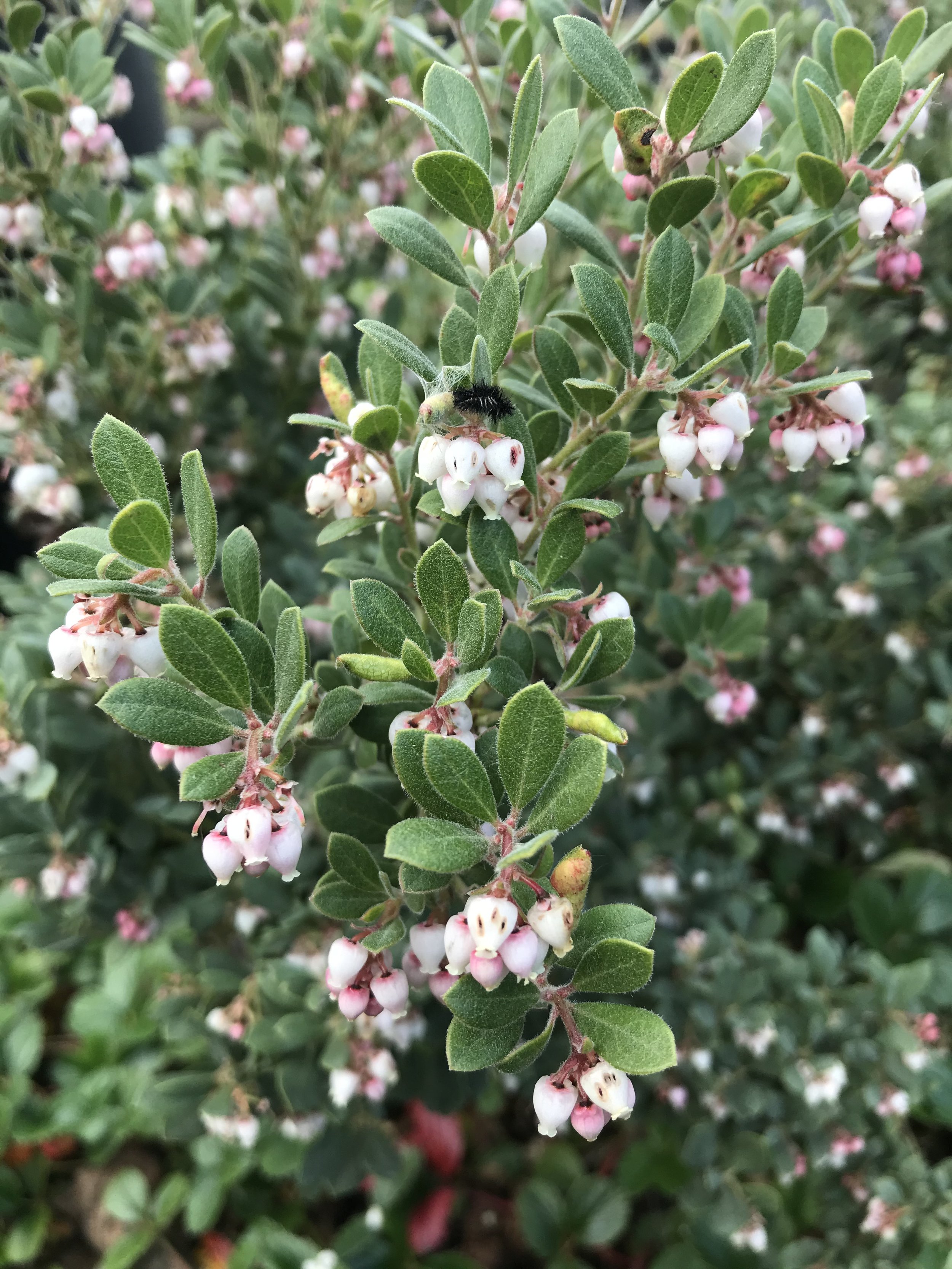Native Plant of the Month: Manzanita
About Manzanitas
Manzanitas (Arctostaphylos spp.) are beautiful chaparral plants treasured for their dramatic form and structure. They can be found from coastal bluffs to high mountain summits, and can range in form from two inch tall groundcovers to 20 foot trees.
All manzanita species have polished red-purple bark that peels once a year, thick evergreen foliage, and fragrant urn-shaped white to pink flowers in the winter that turn to clusters of small edible apple-like fruit in the summer (“manzanita” means “little apple” in Spanish).
Native pollinators depend on the manzanita’s winter flowers when much of the rest of California’s flora is dormant.
Manzanita flowers
The pink manzanita fruit that appears after the flowers have bloomed
How to Garden with Manzanitas
With so many forms, it's easy to find a spot in the garden for a manzanita. They can be a focal point plant, serve as a barrier or hedge, or the low growers are excellent in front of taller shrubs and trees. Some species, especially the tree forms, can be slow to grow, but are well worth the wait. All manzanitas are drought tolerant and prefer well drained soils, and most prefer full sun.
The peeling red bark of a manzanita tree
Native Plants to Grow with Manzanitas
Combine manzanitas with other chaparral and dry oak woodland species such as: Ceanothus spp., California sagebrush (Artemisia californica), deerweed (Acmispon glaber var. glaber), sticky monkeyflower (Diplicus auarnticus), Penstemon spp. and Salvia spp..
How to Buy Manzanitas and other Native Plants
Manzanitas and other California native plants grown from locally wild-collected seed are available for sale from our Native Plant Nursery:
Our nursery is also a partner of Bloom! California along with over 100 other nurseries around the state offering eleven select native plant groups, including manzanitas, that bring California’s unique beauty into your garden, create pollinator habitat, restore nature in the urban landscape, and support water conservation. Learn more at bloomcalifornia.org.
By Nursery Director, Deanna Giuliano





